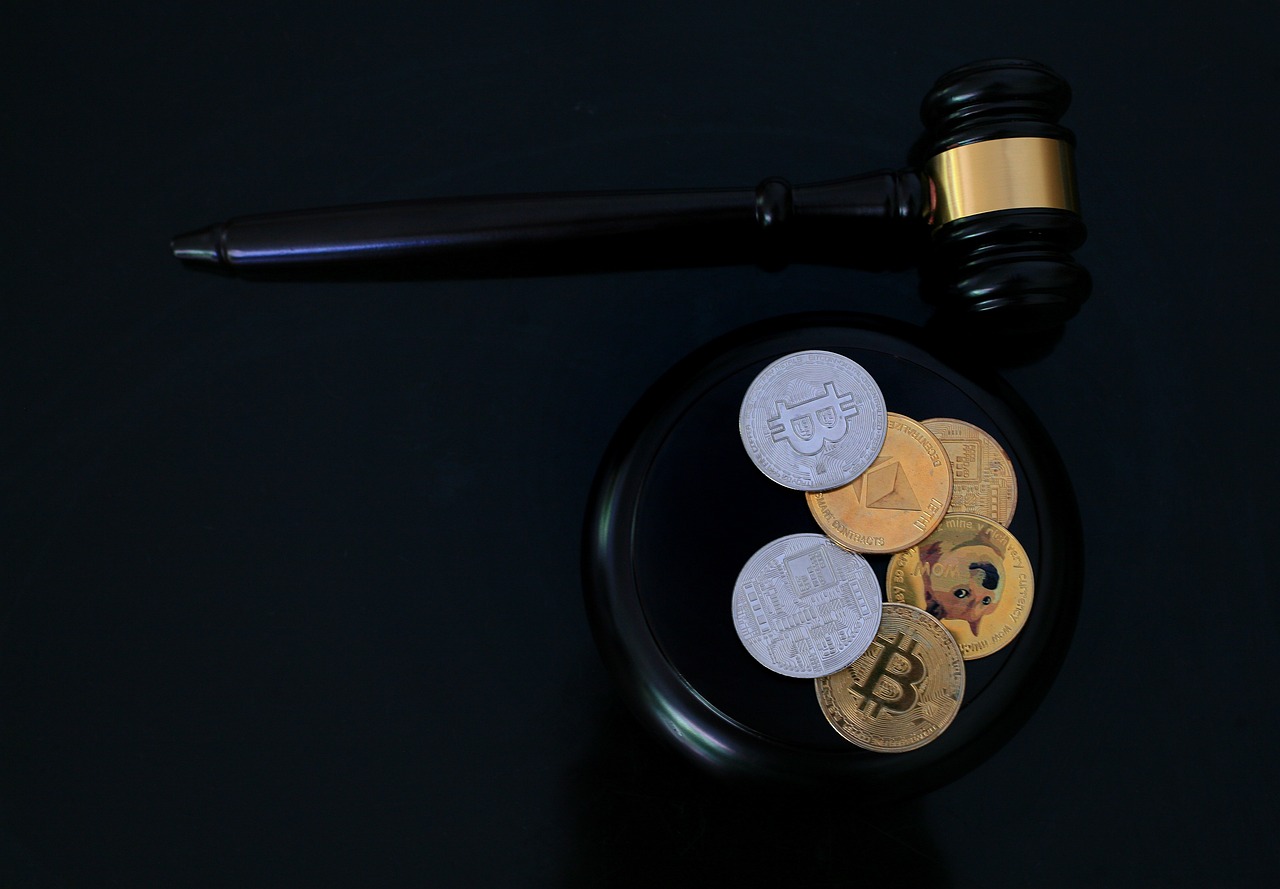Governments worldwide implement policies that directly impact digital asset activities. Staying updated on these rules ensures smooth compliance and helps avoid penalties. For example, several countries require registration of cryptocurrency exchanges to meet anti-money laundering (AML) standards.
The regulatory environment varies significantly by jurisdiction, affecting how businesses and individuals must operate. Recognizing whether a token is classified as a security or commodity determines which authorities oversee its use. This classification influences reporting requirements and investor protections.
Practical knowledge of current laws enables participants to adapt strategies accordingly. Using real-world scenarios, such as tax obligations on crypto gains or mandatory KYC (know your customer) procedures, clarifies necessary steps for conformity. Approaching policy changes proactively reduces risk and fosters trust with regulators.
Understanding crypto regulation: legal landscape basics
Governments worldwide implement policies targeting the control and oversight of digital assets to ensure market integrity and protect investors. The core principles of compliance include anti-money laundering (AML) measures, know-your-customer (KYC) protocols, and transaction monitoring. For example, the Financial Action Task Force (FATF) issues guidelines that many jurisdictions adopt to standardize these requirements across borders.
Regulatory frameworks differ significantly depending on regional authorities’ approaches to asset classification–whether as securities, commodities, or currencies. In the United States, the Securities and Exchange Commission (SEC) often evaluates tokens under securities laws using the Howey Test, while in Europe, the Markets in Crypto-Assets (MiCA) proposal aims for unified rules across EU member states to regulate issuers and service providers effectively.
Key components shaping policy structure
The fundamentals of any government approach encompass defining operational boundaries for exchanges, wallets, and initial coin offerings (ICOs). Compliance demands include mandatory registration of platforms with regulatory agencies, periodic audits, and clear disclosure obligations for operators. These measures help mitigate fraud risks and promote transparency within transactional ecosystems.
- Licensing: Entities facilitating digital asset trading must secure licenses demonstrating adherence to jurisdictional standards.
- Consumer protection: Rules compel firms to implement security safeguards such as cold storage solutions and insurance coverage against theft or loss.
- Taxation: Governments require detailed reporting of gains from digital assets to ensure accurate tax collection.
A practical case involves South Korea’s strict registration system for virtual asset service providers (VASPs), which mandates real-name bank accounts linked directly to exchange users. This approach enhances traceability but raises privacy concerns among participants. Conversely, Switzerland’s FINMA adopts a more innovation-friendly stance by offering clarity through guidance rather than rigid prescriptions.
Navigating this complex environment requires continuous education about evolving statutes and adherence procedures. Businesses entering this sector should prioritize establishing robust internal controls aligned with local standards to avoid penalties and build trust among clients. Moreover, staying informed through official publications and industry consortiums ensures readiness for upcoming changes.
The path toward meeting governmental expectations begins with grasping foundational concepts such as classification criteria and compliance workflows. For those new to decentralized finance platforms or token issuance processes, starting with step-by-step tutorials on registering entities or implementing KYC checks can build confidence. Gradual exposure paired with expert consultation helps transform theoretical knowledge into actionable practices that enhance operational security while respecting legal obligations.
Key regulatory bodies overview
To ensure compliance within the blockchain ecosystem, various government agencies have established frameworks and policies that define operational standards. Among these, the U.S. Securities and Exchange Commission (SEC) plays a pivotal role by classifying certain digital assets as securities, thus requiring issuers to adhere to strict disclosure and registration requirements. This classification directly impacts token offerings and trading platforms, emphasizing the importance of clear guidelines for market participants.
The Financial Crimes Enforcement Network (FinCEN) also contributes significantly by enforcing anti-money laundering (AML) and know your customer (KYC) regulations. Entities dealing with virtual assets must register as Money Services Businesses (MSBs), implementing robust monitoring systems to detect suspicious activities. Understanding FinCEN’s expectations helps businesses mitigate risks associated with illicit transactions.
Global examples of regulatory authorities
In Europe, the European Securities and Markets Authority (ESMA) coordinates efforts among member states to harmonize rules affecting digital tokens and exchanges. ESMA’s approach balances investor protection with innovation encouragement, setting out guidance on transparency, fairness, and market integrity. For instance, its recent scrutiny of Initial Coin Offerings (ICOs) highlights how policy adapts to emerging financial instruments.
Asia presents a diverse set of regulatory actors; Japan’s Financial Services Agency (FSA) stands out with its licensing system for cryptocurrency exchanges. The FSA enforces mandatory cybersecurity measures and capital adequacy ratios to safeguard users’ funds. By contrasting this with South Korea’s Financial Supervisory Service (FSS), which emphasizes real-time transaction monitoring, one observes varying techniques tailored to local economic contexts.
Another significant institution is the Commodity Futures Trading Commission (CFTC) in the United States, which regulates derivatives based on digital assets such as Bitcoin futures contracts. Its mandate covers enforcement actions against fraud and manipulation in derivatives markets, thereby complementing the SEC’s focus on securities. This dual oversight creates a layered framework that addresses different facets of virtual asset utilization.
Lastly, international organizations like the Financial Action Task Force (FATF) influence national policies through recommendations designed to prevent misuse of cryptocurrencies for illicit purposes globally. FATF’s “Travel Rule” obliges service providers to share information about transacting parties, fostering transparency across borders. Integrating such standards into local laws enhances overall market stability while supporting legitimate innovation.
Licensing Requirements for Exchanges
Exchanges must obtain specific licenses to operate legally within various jurisdictions, reflecting the increasing attention governments pay to oversight of digital asset trading platforms. These licenses typically mandate compliance with anti-money laundering (AML) and counter-terrorism financing (CTF) policies, ensuring transparency and security in transactional processes. For example, the Financial Crimes Enforcement Network (FinCEN) in the United States requires exchanges to register as Money Services Businesses (MSBs), which involves submitting detailed information about business operations and implementing robust customer due diligence measures.
In addition to AML and CTF obligations, regulatory bodies often impose capital requirements, cybersecurity protocols, and reporting standards that exchanges must meet before receiving authorization. Singapore’s Payment Services Act mandates that digital payment token services hold a license granted by the Monetary Authority of Singapore (MAS), which involves rigorous checks on governance structures and risk management frameworks. This approach protects users while establishing trust between operators and authorities.
Key Licensing Criteria Across Jurisdictions
Requirements vary substantially depending on location:
- European Union: The Markets in Crypto-Assets Regulation (MiCA) will soon standardize licensing across member states, requiring clear disclosures on operational risks and consumer protections.
- Japan: The Financial Services Agency demands strict Know Your Customer (KYC) procedures alongside cybersecurity audits before granting registration.
- Russia: Operators must adhere to local laws emphasizing registration with government agencies overseeing financial markets, incorporating identity verification systems aligned with domestic AML rules.
These examples illustrate how varying policies influence exchange licensing, highlighting the necessity for operators to tailor their compliance efforts according to regional expectations.
The process of acquiring these permissions requires exchanges to prepare comprehensive documentation covering organizational structure, internal controls, technology safeguards, and financial statements. It is advisable for new entrants to engage legal consultants familiar with local statutes early on to navigate complex application procedures efficiently. Also critical is continuous adherence post-licensing since most regulators conduct periodic reviews and expect timely reporting of suspicious activities or operational changes.
An illustrative case involves a European exchange that failed initial MiFID II-related requirements due to insufficient client protection mechanisms but successfully re-applied after revising its internal audit framework and enhancing customer data encryption methods. This example demonstrates how iterative improvements aligned with regulatory expectations can secure necessary approvals while mitigating future enforcement risks.
Tax Obligations on Crypto Assets
Individuals and entities holding or transacting with cryptocurrencies must recognize their tax responsibilities according to current fiscal frameworks. Gains realized from selling or exchanging virtual tokens are generally treated as taxable income or capital gains, depending on jurisdiction-specific statutes. Accurate record-keeping of acquisition dates, amounts, and transaction values is critical for compliance and precise tax reporting.
The fiscal treatment varies globally, but many authorities classify digital tokens similarly to property or securities rather than currency. This classification affects how transactions–such as trading one token for another, spending crypto on goods, or mining rewards–are reported and taxed. Governments increasingly deploy tools to monitor blockchain activities, enhancing enforcement capabilities.
Classification and Reporting Requirements
Most tax systems require taxpayers to report all taxable events involving virtual assets, including:
- Dispositions through sale or exchange
- Receipt of tokens as compensation
- Mined coins treated as ordinary income upon receipt
- Conversions between different cryptocurrencies
- Use of crypto for purchasing goods or services
This means every time a cryptocurrency changes hands in a way that realizes value, it potentially triggers a tax event. For example, exchanging Bitcoin for Ethereum is not exempt from taxation; the gain or loss must be calculated based on the fair market value at the time of exchange.
Calculating Taxable Income and Gains
Determining taxable amounts requires establishing cost basis (purchase price plus fees) and proceeds (sale price or fair market value). Differences between these figures represent gains or losses subject to taxation. Some jurisdictions differentiate between short-term and long-term holdings with varying tax rates. Additionally, expenses directly related to acquiring or disposing of crypto assets may be deductible.
Compliance Strategies and Record-Keeping Tools
The complexity of tracking multiple transactions necessitates reliable methods for maintaining detailed logs including dates, amounts in local currency equivalents at transaction times, wallet addresses involved, and counterparty details if available. Specialized software solutions offer automated transaction importing from various exchanges with integrated calculation modules that assist in generating compliant reports conforming to local fiscal regulations.
A practical approach involves regular reconciliation of wallet statements against exchange records to identify discrepancies early. Understanding the implications of token forks, airdrops, staking rewards, and hard forks also plays an important role in accurate income recognition. Continuous education about evolving fiscal guidelines ensures adherence without incurring penalties.
The Role of Authorities in Enforcement and Guidance Provision
Treasury departments worldwide have increased surveillance mechanisms using blockchain analytics firms capable of tracing transactions across wallets despite pseudonymity features inherent to distributed ledgers. Notifications urging voluntary disclosure often precede audits targeting non-compliant holders detected via data cross-referencing. Clear guidance documents explaining taxable events provide essential clarity but differ significantly among countries.
An example includes recent amendments mandating reporting thresholds whereby exchanges must furnish customer transaction summaries directly to tax agencies. This enhances transparency but also raises privacy concerns requiring careful navigation by taxpayers seeking professional advice tailored specifically to their circumstances within applicable frameworks.
Anti-Money Laundering Rules
To minimize illicit financial flows, governments implement stringent anti-money laundering (AML) policies targeting virtual asset service providers. These measures require firms to verify customer identities through Know Your Customer (KYC) procedures and continuously monitor transactions for suspicious activity. Failure to comply may result in hefty penalties or revocation of operating licenses, reflecting the seriousness with which authorities approach compliance.
Operators managing digital asset exchanges or wallets must maintain detailed records and report large or unusual transactions to designated financial intelligence units. For example, in 2023, several jurisdictions introduced mandatory real-time transaction screening tools that use pattern recognition algorithms to detect potential laundering schemes within seconds, enhancing oversight capabilities significantly.
Key Components of AML Frameworks
KYC Verification: Mandatory identity checks help confirm the legitimacy of users before they can trade or transfer funds. This process often includes government-issued ID verification, proof of residence, and sometimes biometric data.
Transaction Monitoring: Continuous surveillance of transfers enables early detection of patterns consistent with layering or structuring tactics used by criminals to obscure origins of illicit funds.
- Risk Assessment: Service providers evaluate client risk profiles based on geography, transaction volume, and behavior anomalies.
- Suspicious Activity Reporting: Firms must file reports when encountering transactions that deviate from expected norms.
The integration of blockchain analytics platforms also assists compliance teams in tracing fund movements across decentralized networks, offering transparency previously unavailable through traditional banking channels.
Examples from Regulatory Practice
The Financial Action Task Force (FATF) introduced the “Travel Rule,” requiring entities to share originator and beneficiary information for transfers exceeding certain thresholds. This international recommendation has been adopted by numerous countries, compelling virtual asset service providers to upgrade their systems accordingly. In practice, this means a wallet provider facilitating a $10,000 transfer must transmit identifying details alongside the payment message.
A case study illustrating enforcement is the 2022 investigation into a peer-to-peer exchange that failed to implement sufficient KYC controls. Authorities uncovered money laundering involving proceeds from cybercrime amounting to millions of dollars. The resulting fines and mandated corrective actions emphasized how inadequate supervision exposes platforms to regulatory risks and reputational damage.
Challenges and Adaptations
The pseudonymous nature of many blockchain networks complicates surveillance efforts but does not render them impossible. Advanced heuristics combined with on-chain data analysis enable investigators to correlate wallet addresses with real-world identities over time. Consequently, policy makers encourage collaboration between private sector actors and law enforcement agencies to share intelligence effectively.
Moreover, some countries have begun requiring licensing regimes specific to crypto-asset activities tied directly to AML compliance standards. These include periodic audits and transparent reporting obligations designed to align emerging financial technologies with existing frameworks traditionally applied within banking sectors.
Compliance Challenges for Startups: Navigating Regulatory Complexities
Startups must prioritize early engagement with government frameworks to ensure alignment with evolving policies and avoid costly setbacks. Building a robust compliance strategy that integrates jurisdiction-specific requirements, such as anti-money laundering (AML) protocols and consumer protection mandates, is critical for sustaining operational legitimacy.
For example, incorporating automated transaction monitoring tools can help detect suspicious activities in real time, minimizing regulatory risks. Additionally, understanding the nuances of licensing regimes–whether securities-based or payment-focused–enables startups to tailor their business models effectively within prescribed boundaries.
Key Technical Insights and Future Directions
- Dynamic Policy Adaptation: Startups should implement modular compliance frameworks capable of rapid updates in response to shifting governmental directives. This flexibility reduces downtime when new obligations arise, such as expanded reporting standards or enhanced KYC demands.
- Data Transparency and Auditing: Leveraging blockchain’s immutable ledger features supports transparent record-keeping, facilitating smoother audits by regulators and strengthening trust with stakeholders.
- Cross-Border Coordination: As international authorities increasingly collaborate on enforcement, startups operating globally must harmonize compliance efforts across multiple legal jurisdictions to prevent regulatory conflicts or duplication.
The intersection of policy innovation and technological solutions will shape the operational viability of emerging ventures. Proactively investing in compliance infrastructure not only mitigates legal exposure but also signals credibility to investors and partners. Startups that adopt an anticipatory approach towards governance changes position themselves advantageously amid tightening oversight trends worldwide.





